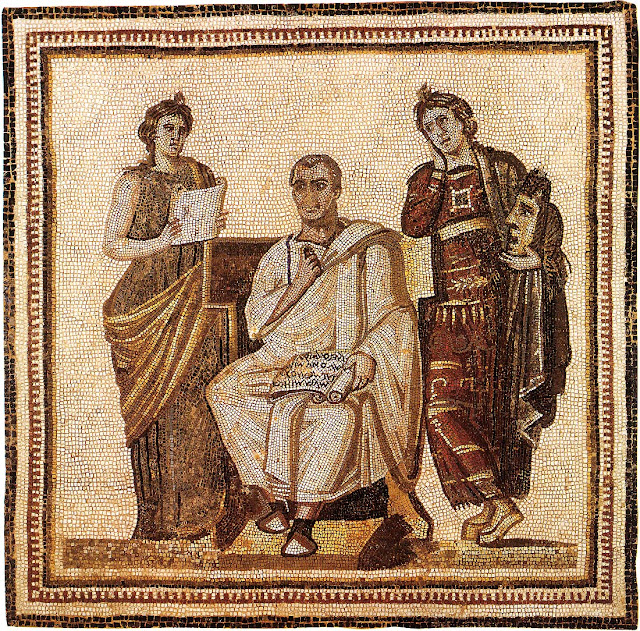After describing several Greek and Roman orators who gave well crafted lengthy speeches, Pliny buttressed his argument by writing;
"Like all good things, a good book is all the better if it is a long one; and statues, busts, pictures and drawings of human beings, many animals and also trees can be seen to gain by being on a large scale as long as they are well-proportioned. The same applies to speeches; and when published they look better and more impressive in a good sized volume." (Ep. 1.20).The context of Pliny's arguments are what make his comments on the bookroll so telling. In the same paragraph Pliny describes well proportioned statues, paintings, and lengthy bookrolls of speeches. In Pliny's mind, the format that the speech would take when published, that is, the bookroll, was just as visually important as a painting or a statue. The Greco-Roman bookroll carried with it a cultural symbolism of everything that was refined and educated. Even a speech gained when it was published in the form of a bookroll.
Hundreds of papyrus bookrolls have been discovered in Egypt that date to around the time Pliny was writing his letter to Tacitus. After studying these Roman era papyrus bookrolls perserved in the sands of Oxyrhynchus, William A. Johnson noted that,
"The bookroll, here and elsewhere, shows distinct signs of deliberate design and attention to what is stylish, as well as exactness in execution involving both measurement and expert estimation. All of this is consistent--as a general picture--with the conclusion that bookrolls were generally the product of scribes trained for the task, that is, to an artisan apprentice trade. The trade clearly also involves a strong sense of cultural demands on the product. The bookroll signaled culture and learning, but for the bookroll to qualify as such required a particular look and feel with well-defined traditions of detail." ("The Ancient Book," 261)In other words, the material remains of the ancient papyrus books, and these comments by Pliny, reveal the cultural and aesthetic demands placed upon the bookroll.
This is in stark contrast to the book form used by the earliest Christians for the writings that later formed the New Testament (see previous posts, here, and here.)
_________________________
Bibliography.
Johnson, William A. “The Ancient Book,” The Oxford Handbook of Papyrology (ed. Roger S. Bagnall. Oxford: Oxford University Press, 2009), 256-277.
Radice, Betty, trans. The Letters of the Younger Pliny. London, England: Penguin Books, 1969.
 |
| A Roman Mosaic Depicting Virgil with a Bookroll |


Nice!
ReplyDelete